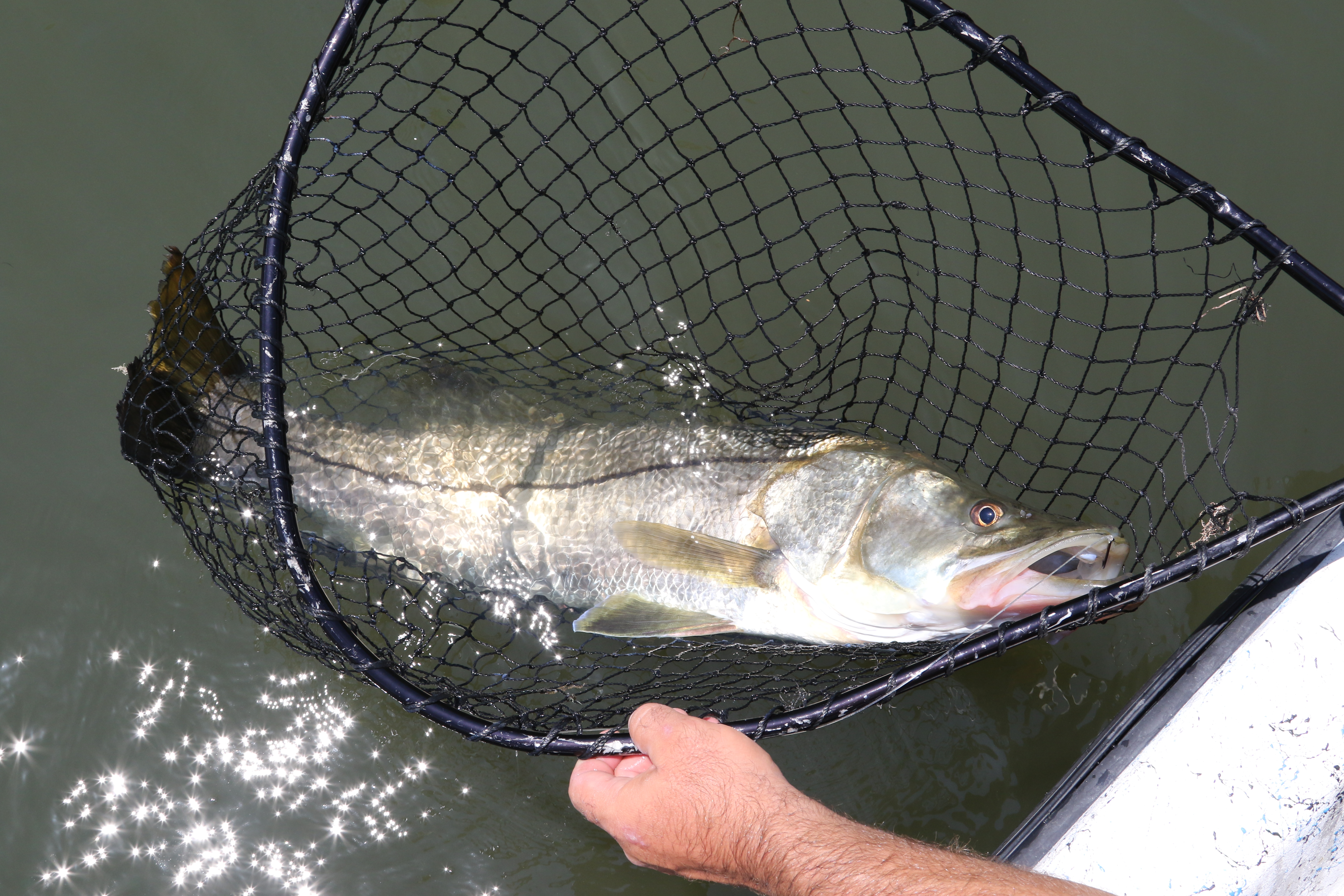
We’ve heard the term “line burner” used to describe a small bass that barely touches the minimum length measurement. Plenty of those in the fish factory known as Lake Okeechobee, but along with the blend of juvenile and giant bass, Florida’s biggest lake also holds a fish nicknamed “linesider” — the common snook.
A sleek, silvery fish with prominent black coloration tracing its lateral line, snook roam coastal areas from bays and beaches, to grass flats, mangrove shorelines and brackish rivers. The latter has allowed snook a conduit into the Big O, where these highly adaptive, freshwater-tolerant fish have established breeding populations.
The Okeechobee Waterway, a U.S. Army Corps of Engineers Project, comprises a 154-mile-long navigational course from the Atlantic Ocean at Stuart, to the Gulf of Mexico at Fort Meyers. Starting on the east coast, the St. Lucie (River) Canal meets the lake at the Port Myakka Lock and Dam.
From there, two navigational routes — one running southwest across the lake to Clewiston and another tracing the lake’s shoreline down and around to the Moore Haven Lock. Continuing through this lock, the waterway the southwest-flowing Caloosahatchee River continues to the Gulf.
Matt Stevens, the Florida Fish & Wildlife Biologist for Lake Okeechobee has seen several snook throughout the course of studying native freshwater species.
“The agency does not conduct sampling for saltwater species on Lake Okeechobee, (however), they do however show up during our regular sampling events on the lake,” Stevens said.
While targeting snook is far less feasible than efforts focused on largemouth bass, crappie, or bluegill, reports of incidental catches are no rarity. Local pro Scott Martin has reported catching several throughout the years.
In the marine environment, snook target baitfish, including scaled sardines, threadfin herring, pinfish, and juvenile mullet, along with crabs and shrimp. In the lake, they likely target shad, bream, shiners, and crawfish — no surprise that many of the traditional bass baits — jigs, topwaters, jerkbaits, spinnerbaits — will also fool snook.
Playing on that lateral pinstripe, snook are sometimes known as “racing mullet,” which notably segues us into a list of other saltwater species that have also been found in Lake Okeechobee — leading off with the fish actually named mullet. These are typically the large black mullet, which keep company with the smaller silver mullet in coastal areas.
“Snook are fairly common to find around any locks or water control structures and there has been several tarpon that show up during sampling also,” Stevens said. “Mullet tend to also show up in the lake very often in the same areas we find snook.”
Less commonly encountered than snook, tarpon typically leave any lakes or backwaters for adult migrations into open Gulf or Atlantic waters. However, the occasional 10- to 30-pounder will occasionally stretch the string of an unsuspecting bass angler.





